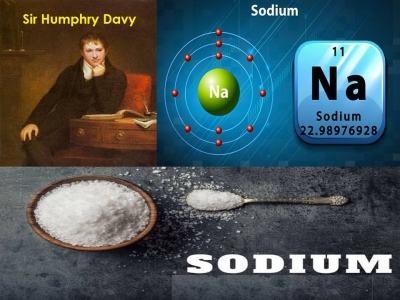
The discovery of sodium is perhaps the most delicious discovery so far. Imagine not having salt in our food! How unappealing it would be!
Sodium is a crucial element that forms common salt or NaCl. Here Na refers to sodium and Cl refers to chlorine, the two atoms that combine to form salt. Although we have used salt for centuries, the scientific discovery of sodium happened only in 1807 as sodium is a highly reactive metal that is hard to isolate.
It was Sir Humphry Davy who discovered sodium (Na) in his laboratory. He used electrolysis to remove it from melted caustic soda and identified that it was a metal. Since pure sodium can cause flames upon reacting with water, Davy had to figure out a moisture-free environment for isolating sodium. In the chemical process of electrolysis, it is the electric currents that create chemical changes.
Sodium is an alkali metal. It is soft and flammable in nature. It appears in a silver-white colour in its pure form. The commonly used compounds such as table salt and baking soda contain sodium. Sodium is an essential element in animals as it regulates a number of body functions.
The English word soda is often considered as the root word from which sodium got its name. The name is also linked to sodanum, a headache remedy, from Medieval Latin. The symbol for sodium on the periodic table, Na, comes from the Latin word ‘natrium,’ which means sodium carbonate.
Picture Credit : Google




